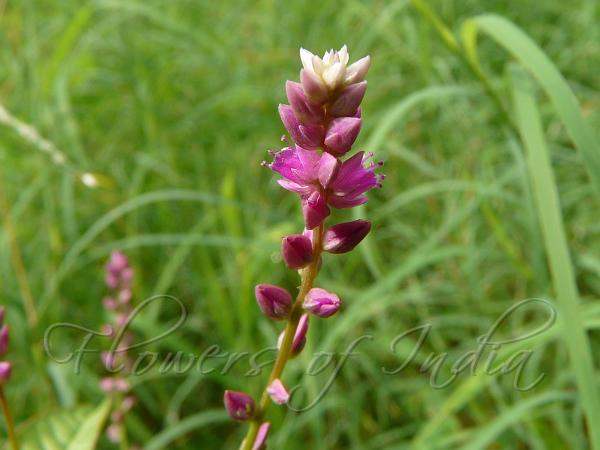|
| False Amaranth |
|

|

| File size | 369585 |
| Original date | 9/20/08 2:07 PM |
| Resolution | 2560 x 1920 |
| Flash | Flash did not fire, auto |
| Focal length | 4.6mm |
| Exposure time | 1/200s |
| Aperture | 5.0 |
| Focus Distance | |
| Metering Mode | Multi-segment |
| Camera make | Panasonic |
| Camera model | DMC-FZ18 |
| Sensor type | OneChipColorArea |
|
|
|
|
Photo: |
Botanical name: Digera muricata Family: Amaranthaceae (Amaranth family)
Synonyms: Achyranthes alternifolia, Chamissoa muricata, Digera arvensis
Synonyms: Achyranthes alternifolia, Chamissoa muricata, Digera arvensis
False Amaranth is an annual herb, growing to 20-70
cm tall. It can be seen growing wild in waste areas. Stems are simple
or branched from the base, nearly hairless. Alternately arranged
leaves, 1-9 cm long and 0.2-5 cm broad, are narrowly linear to broadly
ovate. Leaf stalks are long, up to 5 cm, base is narrowed, and the tip
pointed. Flowers are borne on slender spike-like racemes, which can be
as large as 30 cm long. The racemes are on a stalk that can be up to 14
cm long. Flowers are hairless, white mixed with pink to carmine or red,
usually becoming greenish-white in fruit. Fruit subglobose, slightly
compressed, 2-2.5 mm, bluntly ribbed along each side, surmounted by a
thick rim. In India, the young leaves and shoots of False Amaranth are
made into curries, or the entire plant is boiled and seasoned.
Flowering: August-September.
| Identification credit: Thenmozhi | Photographed in Lodhi Garden, Delhi. |
• Is this flower misidentified? If yes,